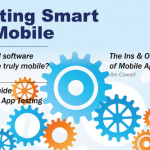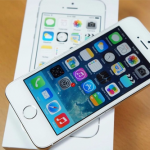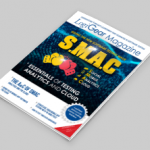 25% of Americans own a tablet. Up from 11% of U.S. adults in July of 2011 to 18% in January of 2012.
25% of Americans own a tablet. Up from 11% of U.S. adults in July of 2011 to 18% in January of 2012.
– Pew Internet & American Life Project
Nigeria has close to 100 million mobile phone lines, making it Africa’s largest telecoms market.
– Nigerian Communications Commission
Google plans to sell 200 million Android phones in Africa. It is estimated that by 2016 there will be a billion mobile phones on the continent.
– CNN
M-PESA is a mobile money transfer service launched by Safaricom, Kenya’s largest mobile operator, and Vodafone, in 2007. Five years later, M-PESA provides services to 15 million Kenyans (more than a third of the population) and serves as conduit for a fifth of the country’s GDP.
In Kenya, Sudan and Gabon half or more of adults used mobile money, according to a survey by the Gates Foundation and the World Bank.
– M-payment
There will be 212.2 million m-payment users in 2012 (up from 160.5 million in 2011), m-payments will total US $171.5 billion in 2012 (up 61.9 percent from $105.9 billion in 2011).
Gartner predicts that in 2016 there will be 448 million m-payment users, in a market worth $617 billion. Asia/Pacific will have the most m-payment users, but Africa will account for the highest revenues.
– Gartner (May 2012)
While the rest of the world dreams of mobile payment , in Japan it is already a way of life. 47 million Japanese have adopted tap-and-go phones in three years – this is one of the fastest roll outs of electronic products in human history.
– ComScore (February 2011)
Mobile usage in the United States, Japan and EU5 (UK, Germany, France, Spain and Italy)
| Used connected media | |||
| United States | Europe | Japan | |
| (browser, app or download) | 46.70% | 41.10% | 76.80% |
| Used messaging | |||
| Sent text message | 68.00% | 82.70% | 41.60% |
| 30.50% | 22.20% | 57.10% | |
| Accessed financial services | |||
| Bank accounts | 11.40% | 8.00% | 7.00% |
Smart phone / device usage by operating system
The Emergence of Mobile Malware:

The World Quality Report, which is compiled each year by consultants Capgemini, software test specialist Sogeti and IT group HP, found that only 31% of 1,550 CFOs, CIOs, IT directors and quality assurance (QA) directors polled conduct tests of mobile applications. Even where testing of mobile software does occur it’s focused on performance rather than functionality or security.
Respondents acknowledged that security testing was only a priority for 18 percent of organizations.
According to a report by the FBI, as of October, 2012, a whopping 25% of employed U.S. adults say they have been a victim of malware or hacking on their personal electronic device.
“As more and more people around the world are adopting smartphones and using them to download apps, bank, and conduct business, there’s more and more of an incentive for criminals to attack phones like they’ve attacked PCs in the past,” he said.
-Kevin Mahaffey, CTO, Lookout




















